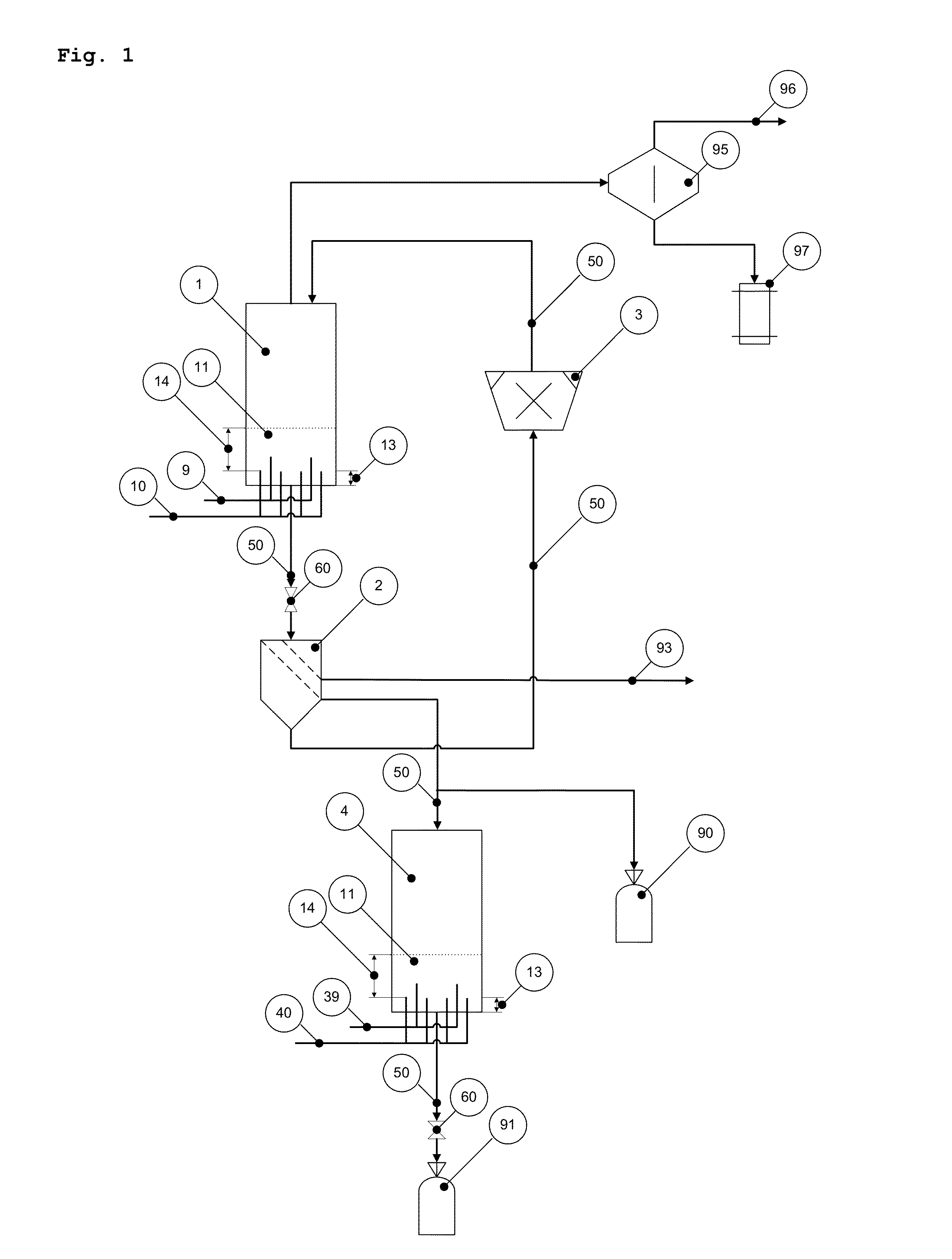Granular polycrystalline silicon and production thereof
a technology of polycrystalline silicon and granular polycrystalline silicon, which is applied in the direction of cellulosic plastic layered products, natural mineral layered products, transportation and packaging, etc., can solve the problems of increased production costs, affecting the quality of granules, so as to reduce production costs, reduce sputtering, and reduce the effect of sputtering
- Summary
- Abstract
- Description
- Claims
- Application Information
AI Technical Summary
Benefits of technology
Problems solved by technology
Method used
Image
Examples
examples
[0154]Numerous experiments were conducted with different process conditions.
[0155]The inventive examples and comparative examples with all important process parameters and characterization data for the granules produced can be found in tables 1-3.
[0156]Table 1 shows positive examples 1 and 2 for crystal form: radiating acicular crystal aggregates and comparative example (negative example) 1 for crystal form: radiating acicular and parallel crystal aggregates.
[0157]Table 2 shows positive example 3 crystal form: radiating acicular crystal aggregates in the particle interior and acicular crystals arranged in parallel in a surrounding thin layer, and comparative example 2 for crystal form: radiating acicular crystal aggregates in the particle interior and acicular crystals arranged in parallel and radially in a surrounding thin layer.
[0158]Table 3 shows positive example 4 and comparative example 3 for crystal form: acicular crystals arranged in parallel.
TABLE 1Negative example 11Positiv...
PUM
| Property | Measurement | Unit |
|---|---|---|
| size | aaaaa | aaaaa |
| particle size | aaaaa | aaaaa |
| size | aaaaa | aaaaa |
Abstract
Description
Claims
Application Information
 Login to View More
Login to View More - R&D
- Intellectual Property
- Life Sciences
- Materials
- Tech Scout
- Unparalleled Data Quality
- Higher Quality Content
- 60% Fewer Hallucinations
Browse by: Latest US Patents, China's latest patents, Technical Efficacy Thesaurus, Application Domain, Technology Topic, Popular Technical Reports.
© 2025 PatSnap. All rights reserved.Legal|Privacy policy|Modern Slavery Act Transparency Statement|Sitemap|About US| Contact US: help@patsnap.com



